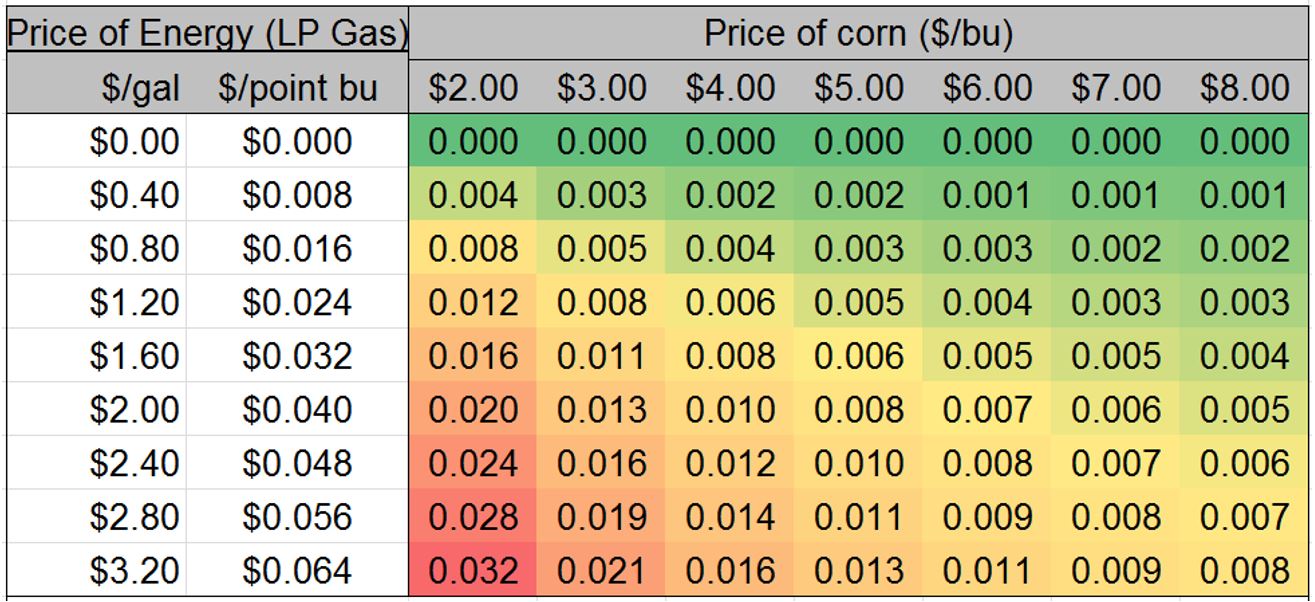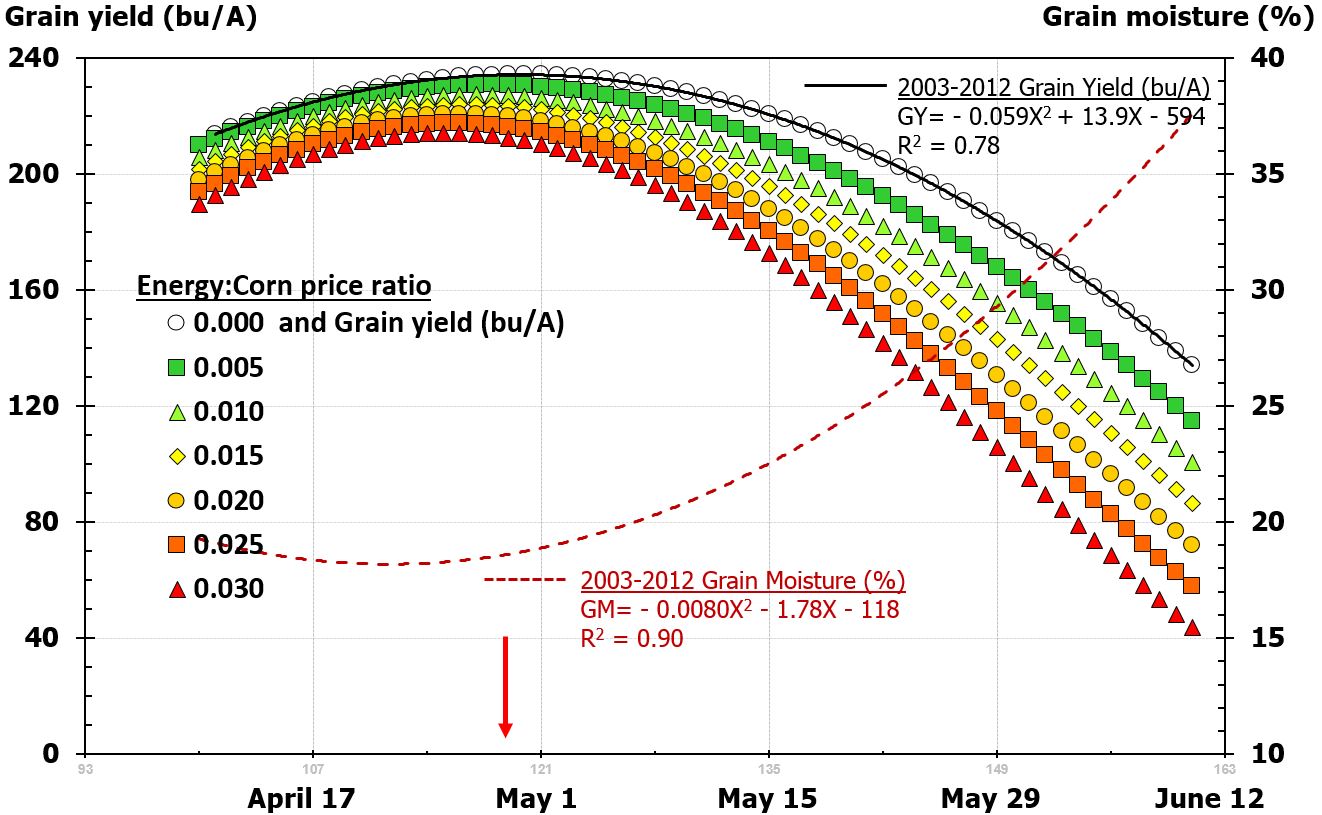| April 29, 2013 |
Field Crops 28.421 - 118
|
|
|
The "Double-Whammy" of Delayed Corn Planting
Joe Lauer, Corn Agronomist
Not all corn farmers and agronomists feel that planting date is a significant yield impact factor. However, in the northern Corn Belt delayed planting not only lowers potential grain yield as described previously, but it can have a significant impact on the economics of corn production. Growing season weather ultimately determines the impact of drying costs on corn production economics. Farmers in the northern Corn Belt often face a shorter growing season with cool, wet conditions and significant snowfall earlier and more often than farmers in the central and southern Corn Belt. During the 2009 production season, drying costs often approached $1.00 per bushel.
When energy costs are zero, such as for high moisture corn, then farmers only consider yield impacts with delayed planting. Table 1 can be used to calculate the impact of energy costs on corn grain drying using an energy:grain price ratio. As energy price increases the energy:corn price ratio increases. As corn price increases the energy:corn price ratio decreases. We assume that it takes 0.02 gallons of LP gas to lower a bushel of corn 1% grain moisture (Hoeft et al, 2000; Hallevang and Morey). Over the last few growing seasons LP gas has cost about $1.60 to $2.00 per gallon while corn prices have ranged from $5 to $7 per bushel resulting in energy:corn price ratios of 0.005 to 0.008.
Table 1. Price ratio of Energy:Corn price (i.e. $/point bu÷ $/bu corn). The drying efficiency value used in the table below equals 0.02 gal/point of moisture (Hoeft et al., 2000 p.328 T15.6; Hellevang and Morey NCH-14 Table 4).

The energy:grain price ratios described in Table 1 are used to calculate the amount of grain yield that is required to pay for energy costs related to drying with delayed planting date in Figure 1. When the energy costs are zero, then the relationship is the same as the grain yield function described previously. As the energy:grain price ratio increases, it takes more and more bushels per acre to pay for the drying costs. For example, on June 1 the grain yield of a 104-108 d RM hybrid is 169 bu/A and the grain moisture 31%. If the energy:grain price ratio is 0.010, then only 143 bu/A are actually harvested. The difference of 26 bu/A was used to pay for the energy costs to dry the corn to 15.5% moisture.
Figure 1. Remaining grain yield (bu/A) after paying the energy cost for drying at various Energy:Corn price ratios. The regressions for grain yield and grain moisture have been fitted to full-season hybrids (104-108 d RM) grown during 2003-2012 (N= 208) at Arlington, WI.

Farmers manage this situation by switching hybrid maturity, switching to different crops or leaving the field over winter to harvest the following spring once grain has dried sufficiently. All options can have significant impact on profitable corn production.
So whether it is a conundrum or fear-mongering, the fact remains that in the northern Corn Belt we are often limited by our growing season and planting date has a significant effect on corn grain yield and more importantly production economics. It is expensive to produce wet corn and the odds of it happening increase as planting date is delayed.
Literature Cited
Hoeft, R.G., E.D. Nafziger, R.R. Johnson, and S.R. Aldrich. 2000. Modern corn and soybean production. First edition, MCSP Publications, Champaign, IL.
Hellevang and Morey, Energy Conservation and Alternative Sources for Corn Drying. National Corn Handbook - 14.
Further Reading
http://corn.agronomy.wisc.edu/Management/L010.aspx